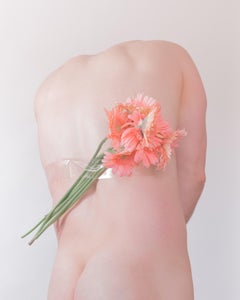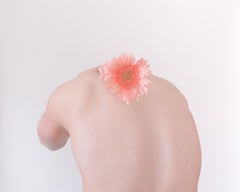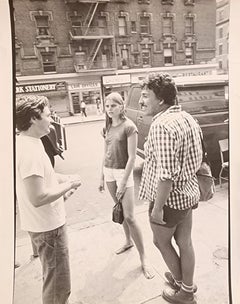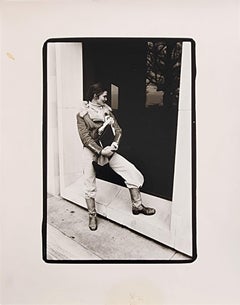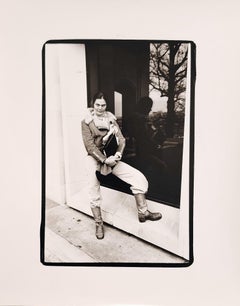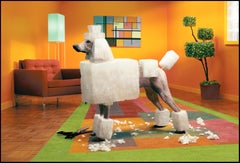Cerbera Gallery Portrait Photography
2010s Contemporary Photography
Photographic Paper, Archival Pigment
2010s Contemporary Photography
Photographic Paper, Archival Pigment
1970s Modern Portrait Photography
Photographic Paper
1970s Modern Portrait Photography
Photographic Paper
1970s Modern Portrait Photography
Photographic Paper
2010s Contemporary Photography
Archival Ink, Archival Paper, Photographic Paper, Archival Pigment
1940s Modern Portrait Photography
Photographic Paper
1940s Modern Portrait Photography
Photographic Paper
1940s Modern Portrait Photography
Photographic Paper
2010s Contemporary Nude Photography
Archival Ink, Archival Paper, Photographic Paper, Archival Pigment
2010s Contemporary Color Photography
Archival Ink, Archival Paper, Photographic Paper, Archival Pigment
2010s Contemporary Photography
Archival Ink, Archival Paper, Photographic Paper, Archival Pigment
2010s Contemporary Photography
Archival Ink, Archival Paper, Photographic Paper, Archival Pigment
2010s Contemporary Photography
Archival Ink, Archival Paper, Photographic Paper, Archival Pigment
2010s Contemporary Photography
Archival Ink, Archival Paper, Photographic Paper, Archival Pigment
2010s Contemporary Photography
Archival Ink, Archival Paper, Photographic Paper, Archival Pigment
2010s Contemporary Photography
Archival Ink, Archival Paper, Photographic Paper, Archival Pigment
2010s Contemporary Photography
Archival Ink, Archival Paper, Photographic Paper, Archival Pigment
2010s Contemporary Photography
Archival Ink, Archival Paper, Photographic Paper, Archival Pigment
2010s Contemporary Photography
Archival Ink, Archival Paper, Photographic Paper, Archival Pigment
2010s Contemporary Photography
Archival Ink, Archival Paper, Photographic Paper, Archival Pigment
2010s Contemporary Photography
Archival Ink, Archival Paper, Photographic Paper, Archival Pigment
2010s Contemporary Photography
Archival Ink, Archival Paper, Photographic Paper, Archival Pigment
2010s Contemporary Black and White Photography
Archival Ink, Archival Paper, Photographic Paper, Archival Pigment
2010s Contemporary Photography
Archival Ink, Archival Paper, Photographic Paper, Archival Pigment
2010s Contemporary Photography
Archival Ink, Archival Paper, Photographic Paper, Archival Pigment
2010s Contemporary Photography
Archival Ink, Archival Paper, Photographic Paper, Archival Pigment
2010s Contemporary Photography
Archival Ink, Archival Paper, Photographic Paper, Archival Pigment
2010s Contemporary Photography
Archival Ink, Archival Paper, Photographic Paper, Archival Pigment
2010s Contemporary Photography
Archival Ink, Archival Paper, Photographic Paper, Archival Pigment
2010s Contemporary Photography
Archival Ink, Archival Paper, Photographic Paper, Archival Pigment
2010s Contemporary Photography
Archival Ink, Archival Paper, Photographic Paper, Archival Pigment
2010s Contemporary Photography
Archival Ink, Archival Paper, Photographic Paper, Archival Pigment
2010s Contemporary Photography
Archival Ink, Archival Paper, Photographic Paper, Archival Pigment
2010s Contemporary Photography
Archival Ink, Archival Paper, Photographic Paper, Archival Pigment
2010s Contemporary Photography
Archival Ink, Archival Paper, Photographic Paper, Archival Pigment
1950s Modern Portrait Photography
Archival Paper, Archival Pigment
1990s Contemporary Portrait Photography
Archival Ink, Archival Paper, C Print
1990s Contemporary Portrait Photography
Archival Ink, Archival Paper, C Print
1990s Abstract Portrait Photography
Archival Ink, Archival Paper, C Print
1940s Modern Photography
Photographic Paper, Silver Gelatin
2010s Modern Photography
C Print
2010s Pop Art Photography
C Print
2010s Outsider Art Photography
C Print
2010s Modern Photography
C Print
2010s Outsider Art Photography
C Print
2010s Street Art Photography
C Print
2010s Contemporary Photography
C Print
2010s Modern Photography
C Print
2010s Modern Photography
C Print
2010s Street Art Photography
C Print
2010s Contemporary Photography
Archival Paper, Archival Pigment
2010s Contemporary Photography
Archival Paper, Archival Pigment
2010s Contemporary Photography
Archival Paper, Archival Pigment
2010s Contemporary Photography
Archival Paper, Archival Pigment
2010s Contemporary Photography
Archival Paper, Archival Pigment
2010s Contemporary Photography
Archival Paper, Archival Pigment
2010s American Modern Photography
Archival Paper, Archival Pigment
2010s American Modern Photography
Archival Paper, Archival Pigment
2010s Pop Art Photography
Photographic Paper, Color, Digital, Inkjet
